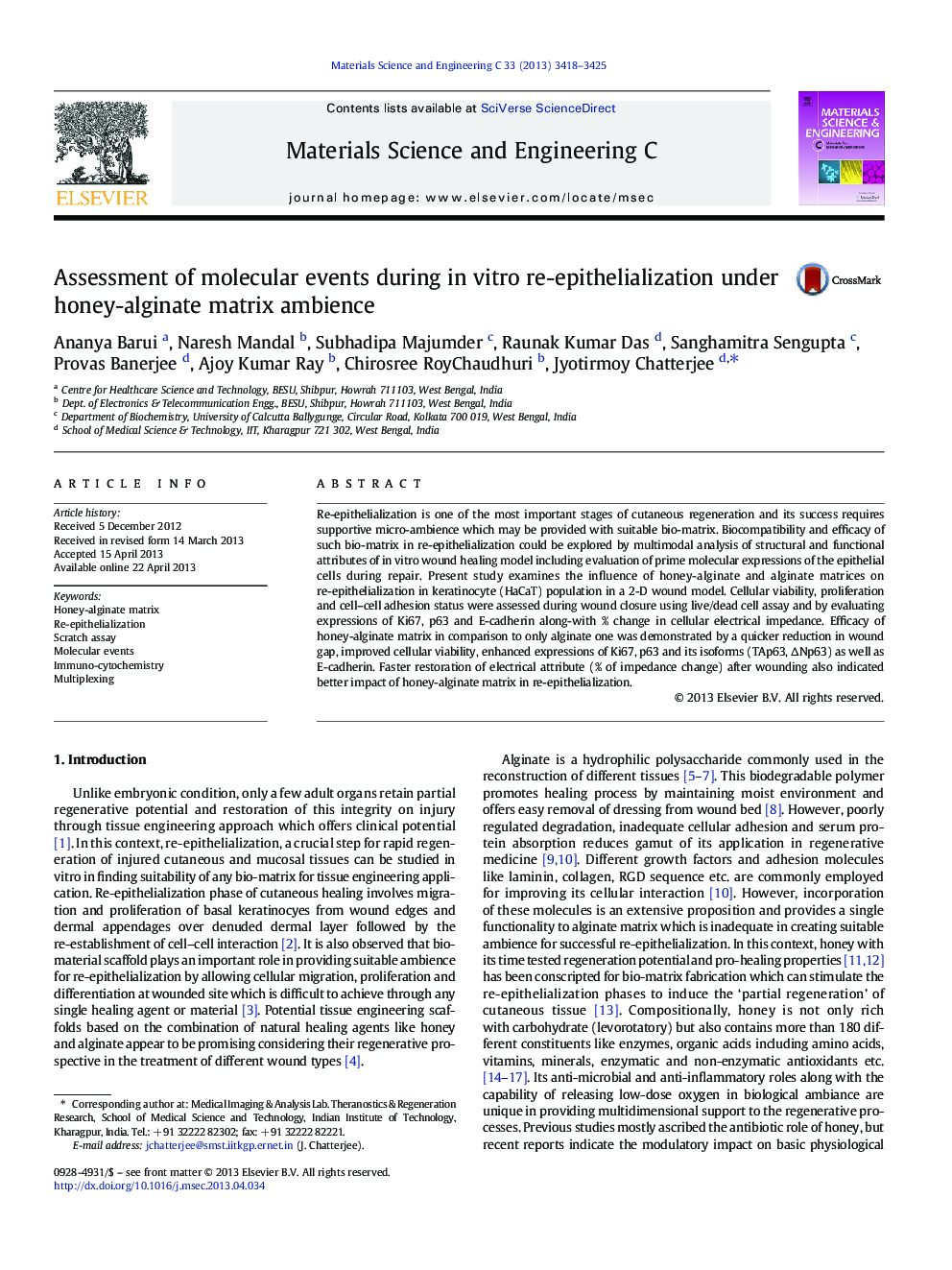| Article ID | Journal | Published Year | Pages | File Type |
|---|---|---|---|---|
| 1429193 | Materials Science and Engineering: C | 2013 | 8 Pages |
•Role of honey based matrix is evaluated in wound re-epithelialization.•Healing impact of matrix studied in 2D in vitro keratinocyte (HaCaT) wound model.•Faster impedance restoration indicated rapid healing rate of HaCaT under honey.•PCR observations showed faster initiation of cell proliferation under honey.•ICC study indicated better up-regulation of healing markers under honey matrix.
Re-epithelialization is one of the most important stages of cutaneous regeneration and its success requires supportive micro-ambience which may be provided with suitable bio-matrix. Biocompatibility and efficacy of such bio-matrix in re-epithelialization could be explored by multimodal analysis of structural and functional attributes of in vitro wound healing model including evaluation of prime molecular expressions of the epithelial cells during repair. Present study examines the influence of honey-alginate and alginate matrices on re-epithelialization in keratinocyte (HaCaT) population in a 2-D wound model. Cellular viability, proliferation and cell–cell adhesion status were assessed during wound closure using live/dead cell assay and by evaluating expressions of Ki67, p63 and E-cadherin along-with % change in cellular electrical impedance. Efficacy of honey-alginate matrix in comparison to only alginate one was demonstrated by a quicker reduction in wound gap, improved cellular viability, enhanced expressions of Ki67, p63 and its isoforms (TAp63, ΔNp63) as well as E-cadherin. Faster restoration of electrical attribute (% of impedance change) after wounding also indicated better impact of honey-alginate matrix in re-epithelialization.
